Corrections Corporation of America
description: US prison-operating company
20 results

Competition Overdose: How Free Market Mythology Transformed Us From Citizen Kings to Market Servants
by
Maurice E. Stucke
and
Ariel Ezrachi
Published 14 May 2020
Privatization of the prison system is actually just the latest iteration of a view of the prison system as a potential profit center.3 During the 1980s, the prison system was faced with severe overcrowding as tough-on-crime legislation and mandatory minimum-sentencing guidelines sent far more offenders to prison, and kept them there for longer, than the system could handle. The result was a prison system in crisis. Thus, the siren song of the privatizers—Whatever the government can do, we can do better—proved very alluring. And in 1983, Corrections Corporation of America came on the scene to offer the country its first private prison—a motel in Texas that was remodeled to hold immigration detainees. Privatizing US prisons was supposed to offer a cheaper, more efficient, and better-managed alternative to the overcrowded government prisons. It would allow federal and state governments to lock up the burgeoning inflow of inmates without taking on additional debt or having to go to the voters to approve bonds for new prisons (which voters were often reluctant to do).
…
Private prisons have the same interests as society does: to reduce crime, to promote leniency in parole for older nonviolent criminals, to release criminals early for good behavior, and to find alternatives to locking people up, like work release programs. The answer is none of them. The boon in private prisons has resulted in spending more tax dollars for poorer quality services. One mismanaged US prison—run by Corrections Corporation of America, the first of America’s private prison companies and one of the largest in the country—fostered such an extreme culture of violence among both guards and prisoners that it was nicknamed Gladiator School (by the inmates themselves). But this decrease in quality has not deterred the expansion of privatization.
…
At times, privatization skews the incentives Competition does not always ensure that the private sector’s incentives will align with societal goals. Sometimes, as with for-profit prisons, marketplace incentives may be intrinsically contrary to society’s. Consider the following text from the 2017 annual report filed by CoreCivic (formerly Corrections Corporation of America, until it was “rebranded” in 2016, at a time when its operation was under investigation). Under the heading “Risks to Our Business and Industry,” CoreCivic cautioned investors about a number of potential downsides to its revenue, including: . . . the relaxation of enforcement efforts, the expansion of alternatives to incarceration and detention, leniency in conviction or parole standards and sentencing practices or through the decriminalization of certain activities that are currently proscribed by criminal laws . . .
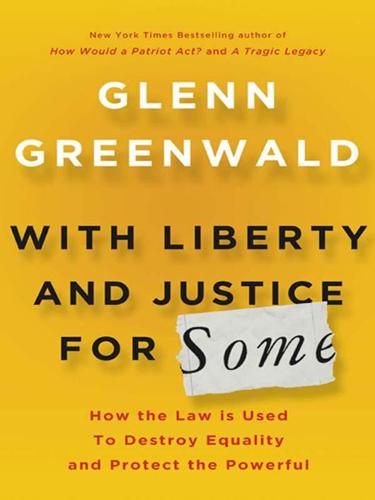
With Liberty and Justice for Some: How the Law Is Used to Destroy Equality and Protect the Powerful
by
Glenn Greenwald
Published 11 Nov 2011
Imprisoning criminals, once exclusively a government responsibility, has—like most government functions—been increasingly privatized. All over the United States, more and more prisons are managed not by government agencies but by for-profit private corporations such as Geo Group and Corrections Corporation of America. (In 2008, private prisons housed 7.5 percent of all inmates nationwide.) Those same companies accrue substantial revenues by providing contracting services to government-run prisons. They quite naturally view prisoners as their basic stock in trade and earn a profit for each one they incarcerate.
…
Accordingly, the Phoenix revealed, the industry “regularly lobb[ies] against criminal-punishment reforms, and for the creation of new criminal statutes and overly harsh prison sentences. While these efforts are cloaked as calls for public safety, they are essentially creating more business for themselves.” The report noted that significant sums of money were at stake. The country’s largest private prison provider, the Corrections Corporation of America (CCA), spent more than $2.7 million from 2006 through September 2008 on lobbying for stricter laws. Last year alone, the company, listed on the New York Stock Exchange, generated $133 million in net income. Since there is no well-funded lobby advocating for penal reform or promoting the interests of prisoners, the prison lobby goes virtually unchallenged and can buy the ability to shape pertinent laws at bargain basement prices.
…
(Lederman) Card, Andrew Carney, John Carothers, Thomas Carter, Jimmy CBS network CBS News Center for Labor Market Studies Center for Responsive Politics Central Intelligence Agency (CIA) contractors detainee interrogation videos inspector general’s report of 2004 Iran-Contra and Obama and Plame outing and renditions and torture and warrantless eavesdropping and whistle-blowers and Cheney, Dick Iran-Contra and Iraq war and Libby and torture and warrantless eavesdropping and China Church Committee Citigroup civil rights movement civil suits Clarke, Richard Clinton, Bill campaign of 1992 campaign of 1996 Bush and financial deregulation and impeachment of Iraqgate and law and order and NSA and telecoms and Clinton, Hillary CNBC CNN Español Coats, Dan cocaine Cohen, Richard Cole, David Cole, USS, attacks Columbia Journalism Review Comcast Comey, James Commerce and Labor Department Commodity Future Trading Commission Common Sense (Paine) Communications Act Congressional Quarterly Conrad, Kent Consortium News Consumer Federation of America Contract with America Convention Against Torture Conyers, John Coolidge, Calvin Cordray, Richard Corn, David Corp Watch correctional population Corrections Corporation of America Countrywide Cox, Archibald Cox, Douglas W. Cramer, Bud Crawford, Susan J. credit default swaps credit rating agencies criminal justice Croatia Daily Finance Dark Side, The (Mayer) Davis, Morris Deal Defense Department Democratic Congressional Campaign Committee Democratic Party Bush-era crime and financial elites and law and order and National Convention of 2008 presidential primary of 2007–8 Tammany Hall and Teapot Dome and telecom immunity and U.S. attorney firings and warrantless eavesdropping and Watergate and Democratic Senatorial Campaign Committee Dempsey, Joan Depression of 1930s derivatives Dershowitz, Alan Digby Dimon, Jamie Dissertations on First Principles of Government (Paine) Dodd, Chris Domestic violence Dominican Republic Donilon, Tom Donovan, Shaun Drake, Thomas Drug Enforcement Agency (DEA) Drug Policy Alliance drugs, “war on,” due process Dukakis, Michael Durbin, Dick Easton, Nina ECONned (Smith) economic inequality Economist Edwards, Don Egypt Eisinger, Jesse elections of 1876 of 1988 of 1992 of 1996 of 2002 of 2004 of 2008 Electronic Frontier Foundation (EFF) Emanuel, Rahm Emblematical Representations (Franklin) Emmanuel, Charles England, Lynndie equality under the law abandonment of erosion of, and economic inequality as founding principle public opinion on rigid enforcement vs. ordinary Americans and Erzinger, Martin Joel Escobedo v.
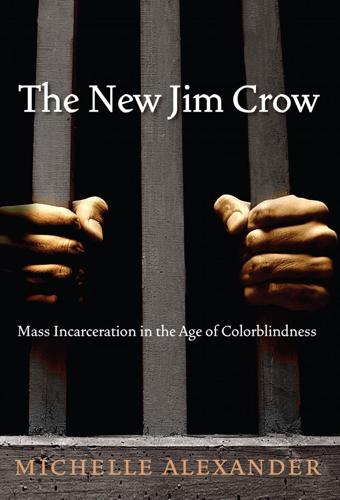
The New Jim Crow: Mass Incarceration in the Age of Colorblindness
by
Michelle Alexander
Published 24 Nov 2011
Rich and powerful people, including former Vice President Dick Cheney, have invested millions in private prisons.15 They are deeply interested in expanding the market—increasing the supply of prisoners—not eliminating the pool of people who can be held captive for a profit. The 2005 annual report for the Corrections Corporation of America explained the vested interests of private prisons matter-of-factly in a filing with the Securities and Exchange Commission: Our growth is generally dependent upon our ability to obtain new contracts to develop and manage new correctional and detention facilities. This possible growth depends on a number of factors we cannot control, including crime rates and sentencing patterns in various jurisdictions and acceptance of privatization.
…
The nonprofit PEW Charitable Trusts reports that inmate populations in at least ten states are expected to increase by 25 percent or more between 2006 and 2011. In short, the market for private prisons is as good as it has ever been. Damon Hininger, the president and chief operations officer of Corrections Corporation of America, the largest private-prison operator in the United States, is thoroughly optimistic. His company boosted net income by 14 percent in 2008, and he fully expects the growth to continue. “There is going to be a larger opportunity for us in the future,” he said.18 Even beyond private prison companies, a whole range of prison profiteers must be reckoned with if mass incarceration is to be undone, including phone companies that gouge families of prisoners by charging them exorbitant rates to communicate with their loved ones; gun manufacturers that sell Taser guns, rifles, and pistols to prison guards and police; private health care providers contracted by the state to provide (typically abysmal) health care to prisoners; the U.S. military, which relies on prison labor to provide military gear to soldiers in Iraq; corporations that use prison labor to avoid paying decent wages; and the politicians, lawyers, and bankers who structure deals to build new prisons often in predominately white rural communities—deals that often promise far more to local communities than they deliver.19 All of these corporate and political interests have a stake in the expansion—not the elimination—of the system of mass incarceration.
…
A reduction of 79 percent would be needed to get back to the 160 figure—itself a fairly high number when judged by international standards. 14 Marc Mauer, Race to Incarcerate (New York: The New Press, 1999), 11. 15 Christopher Sherman, “Cheney, Gonzales, Indicted Over Prisons,” Washington Times, Nov. 19, 2008. 16 U.S. Securities and Exchange Commission, Corrections Corporation of America, Form 10K for the fiscal year ended Dec. 31, 2005. 17 Silja J.A. Talvi, “On the Inside with the American Correctional Association,” in Prison Profiteers: Who Makes Money from Mass Incarceration, ed. Tara Herivel and Paul Wright (New York: The New Press, 2007). 18 Stephanie Chen, “Larger Inmate Population Is Boon to Private Prisons,” Wall Street Journal, Nov. 28, 2008. 19 See generally Herivel and Wright, Prison Profiteers.
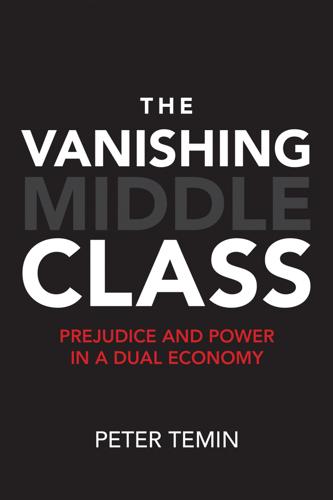
The Vanishing Middle Class: Prejudice and Power in a Dual Economy
by
Peter Temin
Published 17 Mar 2017
The shadowy trail of prisons for immigrants provides glimpses of what goes on in the varied jails and prisons around our country.21 The private prison firms communicate their interest in more prisoners to state legislators in various ways: by campaign contributions, personal relations, and lobbying. The Corrections Corporation of America has spent over $20 million on political campaigns and lobbying and is continuing these efforts today. They also lobby through the American Legislative Exchange Council (ALEC), the conservative, nonprofit organization founded and funded by the Koch brothers in 1973 and described in chapter 2.
…
Yonkers and, 131 water systems and, 35–36, 129–130 Citizenship, 15, 22, 159 Citizens United, 84–85, 95, 158–159 Civil rights code words and, xii full citizenship and, 15, 22, 159 Investment Theory of Politics and, 67, 72 Johnson and, 15, 27, 53, 59, 89, 126, 168n2 mass incarceration and, 104, 113 race and, 15, 20, 22, 27, 53, 56–59, 67, 72, 94, 104, 113, 133, 142 Civil Rights Act, 15, 20, 58, 133 Civil War, ix, xi, 15, 17–18, 51, 65, 88, 94, 107, 180n13 Clinton, Bill, 94–95, 104, 138 Coates, Ta-Nehisi, 49 Cocaine, 37, 104 Code words and, xii, 18 College, 168n10 cities and, 129, 133 debt and, 139–140 dual economy and, 3, 8, 10–11 FTE (finance, technology, and electronics) sector and, 10, 24–25, 41–46 GI Bill and, 34, 43, 52, 65 inadequate resources of, 42–46, 116 infrastructure reform and, 157 low-wage sector and, 29, 122 mass incarceration and, 101–102, 105, 108, 110 need for refinancing, 157 Pell Grants and, 43 race and, 52, 119–121 student loans and, 43–45, 137, 140, 172n14 transition and, 41–46 tuition costs and, 43, 46, 105, 150 undue hardship and, 44 women and, 57, 116 Columbus Day, 67 Competition border issues and, 55, 103 China and, 32 globalization and, 8, 28–29, 33, 55, 148, 151, 155, 161 Head Start and, 127 immigrants and, 31–32, 103 Investment Theory of Politics and, 68 Japan and, 32 labor and, 32, 103, 127 low-wage sector and, 31–34 mass incarceration and, 110–112 mutual funds and, 31 public education and, 127 tariffs and, 21, 32–33 very rich and, 85 Concepts of government Affordable Care Act and, 91–92, 95 African Americans and, 88, 91, 94 autocracy and, 87–88, 92–97 capital and, 93 conservatives and, 89, 96–97 democratic, 64–65, 75, 87–96, 137, 156, 158–160, 175n1 Democrats and, 88, 95–96 discrimination and, 89 federalism and, 21–22, 35, 44, 65, 83, 103, 110 financial crisis of 2008 and, 91, 95 FTE (finance, technology, and electronics) sector and, 87, 92, 94, 96 Greeks and, 87 health care and, 92 industry and, 87, 93 inequality and, 87–88, 94 insurance and, 89–90 Investment Theory of Politics and kleptocracy and, 93 Latinos and, 91 Lewis model and, 89 Lincoln and, 87 low-wage sector and, 89, 92 mass incarceration and, 95 Medicaid/Medicare and, xv, 91, 93, 142 New Deal and, 21, 52, 65, 80–81, 101, 141 North and, 88, 94 oligarchy and, 65, 72, 87–89, 93–97, 115, 159 privatization and, 16, 19, 21–22, 44, 101, 110, 112, 120–122, 134, 158 product liability law and, 91 risk reduction and, 89–91 Romans and, 87, 97 slavery and, 88, 94 South and, 88, 91, 94 taxes and, 89–92, 95 voting and, 88–89, 94–96 wages and, 89–92 women and, 94 World War I era and, 94 World War II era and, 88, 92 Congressional Budget Office, 22–23 Conservatives, 159 ALEC and, 19, 37, 83, 95, 110–111 Cato Institute and, 18, 22 concepts of government and, 89, 96–97 Dallas, Texas, and, 80–81 equal protection clause and, 67 federal power and, 21–22 FTE (finance, technology, and electronics) sector and, 16–22 John Birch Society and, 83 mass incarceration and, 110 military and, 16, 22, 71 production and, 80–81 public education and, 124 race and, 56, 58–59 supremacist organizations and, 169n9 very rich and, 80–85 welfare state and, 21 Constitutional Convention, 62–64 Consumer Financial Protection Bureau, 91 Consumption, 4, 16, 79, 139–140, 158, 161 Corrections Corporation of America, 110 Corruption, 74, 93 Cotton, xi, 59, 115 Coverture, 56 Cross-country comparison African Americans and, 148 financial crisis of 2008 and, 150–151 FTE (finance, technology, and electronics) sector and, 147, 149 income distribution and, 147–151 inequality and, 147–151 labor and, 148, 151 Lewis model and, 147 low-wage sector and, 147–150 middle class and, 147, 151 poverty and, 149 slavery and, 148 Curiel, Gonzalo P., 66 Dallas, Texas, 80–81, 84, 102 Dark Money (Mayer), 83 Dasgupta, Partha, 165–166 Debt Affordable Care Act and, 141–142 African Americans and, 142, 144 college and, 139–140 Fannie Mae and, 138 financial crisis of 2008 and, 138–141, 143, 154, 158 as form of oppression, 137–138 Freddy Mac and, 138 FTE (finance, technology, and electronics) sector and, 137–144 HAMP and, 139–140 housing and, 138–139 infrastructure and, 143 Latinos and, 144 low-wage sector and, 137–143 mortgages and, 34, 44–45, 69, 80, 117, 137–140, 154, 156, 179n5 national, 141–143 OPEC and, 143 personal, 137–141 police and, 139 Reagan and, 143 reform for, 156, 158 Social Security and, 141 student loans and, 43–45, 137, 140, 172n14 TARP and, 139, 179n4 taxes and, 138, 141, 158, 172n14 unemployment and, 141 universities and, 139–140 Declaration of Independence, 18, 51 Defensible space, 131–133 Dell, Michael, 121 Democracy Civil Rights Act and, 15, 20, 58, 133, 142 concept of, 64–65, 75, 87–96, 137, 156, 158–160 FTE (finance, technology, and electronics) sector and, 21 Investment Theory of Politics and, 63, 65, 67 popular vote and, 62, 96 public education and, 115 security and, 155 social programs and, 162 state legislatures and, 19, 62–63, 95 very rich and, 81, 85 Voting Rights Act and, 15, 58, 65, 67, 89, 94, 142, 159 Democratic National Convention Democrats concepts of government and, 88, 95–96, 175n1 disorganization of, 159 Investment Theory of Politics and low-wage sector and, 154 Northern, 59 public education and, 125 race and, 51, 58–59 Southern, 51, 59 very rich and, 80–81, 84 Deregulation, 16–23, 32, 44, 85 Developing countries, 6, 7–8, 21, 151, 163 Dewey, John, 155–156, 159 Dimon, Jamie, 62 Discrimination Brown v.
…
Day, 67 Mass incarceration African Americans and, xv–xvi, 101–109, 112, 153 ALEC and, 110–111 bail and, 40, 105–106 Ban the Box campaigns and, 38 Clinton and, 104 college and, 101–102, 105, 108, 110 competition for, 110–112 concepts of government and, 95 conservatives and, 110 Corrections Corporation of America and, 110 cost of, 105–106 discrimination and, 105 drugs and, 104–110, 112 federal funding and, 37 FTE (finance, technology, and electronics) sector and, 101–106, 109, 112–114 Great Migration and, 104 health care and, 108–109, 113 housing and, 105–106, 112–113 immigrants and, 103, 110, 112 income distribution and, 109 industry and, 111 inequality and, 113 Investment Theory of Politics and, 66, 111 Jim Crow tradition and, xvi, 53, 104 labor and, 106 Latinos and, 103–104, 106 lobbyists and, 110–111 low-wage sector and, 38, 101, 103, 105, 107, 112–114, 153–154, 156 Nixon and, 104, 109 North and, 104 police and, 102–103, 110, 112, 127, 157, 176n3 private prisons and, 110–112, 177n21 public education and, 119, 126–128, 156 rape and, 108–109 Reagan and, 104 reform for, 110–113, 156 rural areas and, 66 social capital and, 103, 107, 156 social control and, 38 societal functions of, 111–112 taxes and, 101, 103, 105 terrorists and, 95 two-tiered system of punishment and, 109, 113 unemployment and, 104, 113 U.S.
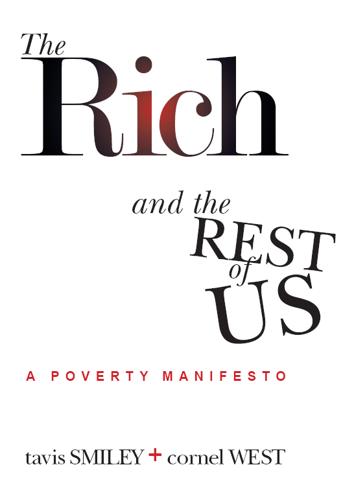
The Rich and the Rest of Us
by
Tavis Smiley
Published 15 Feb 2012
PRIVATIZATION VERSUS PUBLIC INVESTMENT There’s a third tier in the poverty/prison matrix – profits. Altogether, states pay billions to house prisoners and private companies want their share. This probably explains why Corrections Corporation of America, the nation’s largest for-profit prison operator, recently offered to buy prisons in 48 states. The Huffington Post obtained a copy of the letter sent to state officials and in February 2012 published an in-depth article about the proposed deal. According to the letter, Corrections Corporation of America’s management offer came with an interesting caveat; a 20-year contract and an assurance that the prisons would remain “at least 90 percent full.”101 This proposed prison deal speaks to a larger, more pervasive trend of our times—rich corporations’ desire to privatize public institutions for profit.

Poverty for Profit
by
Anne Kim
The result, in many instances, is a system less concerned about the proper administration of justice than about maximizing profits from prisoners. The Private Detention Industry: Prisons and Beyond As with so many other industries profiled in this book, a handful of firms dominate the private detention market. The two biggest are CoreCivic (formerly the Corrections Corporation of America [CCA]) and the GEO Group (formerly Wackenhut).113 Smaller players include the Management and Training Corporation (the same company that holds the monopoly on Job Corps, described in chapter 3) and LaSalle Corrections (whose facilities are focused in Louisiana, Texas, and Georgia).114 From the start, the industry has moved aggressively and creatively—including through the strategic use of public policy—to grow, preserve, and diversify their business.
…
As early as the mid-1800s, “economizing state legislatures awarded contracts to private entrepreneurs to operate and manage Louisiana’s first state prison, New York’s Auburn and Sing Sing penitentiaries and others,” writes prison privatization expert Byron Eugene Price in his book Merchandizing Prisoners.115 Scandals and abuses led to the industry’s near-demise through the 1950s before “expanding prison populations, pressures from courts to quickly add prison space and increases in prison costs” sparked a revival in the 1980s, Price writes.116 Between 1985 and 2005, the number of Americans behind bars grew to a stunning 1.6 million—in part because of rising crime rates but also because of the “war on drugs,” harsher sentences, and other policies encouraging mass incarceration.117 While states struggled with the influx of inmates, prison entrepreneurs saw a golden opportunity to relaunch an industry. Leading the way was Nashville-based Corrections Corporation of America (CCA, now CoreCivic), founded in 1983 by Republican Party activist Thomas Beasley and financed by venture capitalist Jack Massey.118 Massey had already made his fortune building both Kentucky Fried Chicken (he bought the chain from founder “Colonel” Harland Sanders for $2 million in 1964) and the Hospital Corporation of America, now the largest hospital chain in America.119 When a court ordered Tennessee to fix its overcrowded prisons by the end of 1985, CCA boldly offered to spend $250 million—including $150 million to build two new prisons—in exchange for exclusive rights to run the state’s system for ninety-nine years.120 The company lost its bid, but brazen tactics like these would characterize the prison industry’s rapid rise in the 1980s and 1990s.
…
See also Medicaid dentistry; National School Lunch Program Children’s Health Insurance Program (CHIP), 35, 108, 110 child support enforcement, 52–53 Child Tax Credit, 14 Chmura Economics and Analytics, 74–75 Church Street Health Management (CSHM), 114–15 Civic Works Center for Sustainable Careers (Baltimore), 185–86, 187–89 “Civilian Climate Corps,” 327–28n17 Civilian Conservation Corps, 71 Clearfield Job Corps Center (Utah), 94 Clinton, Bill, 45–50, 60–61, 71–72; and Democratic Party, 46–47; EITC expansion, 18, 72; “National Performance Review” (1993), 47; privatization and 1996 welfare reform legislation, 50, 54, 60–61; “reinventing government,” 37, 45–50 Cohen, Donald, 36, 40 Cold War, 43, 49 Colorado Dental Board, 113–14 Colorado’s Medicaid dentistry, 104–5, 109–10, 113–14 Commonwealth Fund, 103, 124 Community Reinvestment Act (CRA), 202, 317n57 Compass Group North America, 217 Comprehensive Employment and Training Act of 1973 (CETA), 67–68 ConAgra food service, 217–18 Concentrated Employment Program, 66, 67 Congressional Budget Office (CBO), 121, 229 Congressional Friends of Job Corps Caucus, 98 Connecticut: electronic monitoring fees for pretrial defendants, 166; Medicaid dentistry, 117, 118; prison room and board fees, 181–82 ConnectNetwork, 180 conservative victories in dictating U.S. social policy, 17–18, 42–46, 59–61, 69–70, 232–33 Consumer Federation of America, 24 Consumer Financial Protection Bureau (CFPB), 181, 182 Cook County, Illinois, 165, 167–69, 170 CoreCivic, 172–73, 175–77 Cornell Corrections, 175 coronavirus pandemic: dialysis patients, 139, 292n233; emergency rental assistance, 190; emergency SNAP benefits, 206–8; home detention and electronic monitoring, 165–66; impact on young adults, 81–82, 99–100; infections in jails and prisons, 166; Job Corps performance during and after, 82–83; and the National School Lunch Program, 215, 216; performance reports by WIOA-funded job training programs, 79; poverty rates and pandemic-related benefits, 5, 206–8, 239n20, 239n22; and private prisons, 174–75, 182; TANF recipients, 57; youth unemployment and college attendance drops, 81–82 Corrections Corporation of America (CCA), 172–73, 175. See also CoreCivic corrections system. See criminal justice profiteers Corsair Capital, 15, 26 Cotter, Dennis, 136, 138 Council of Economic Advisors, 30, 71 COVID Prison Project at the University of North Carolina–Chapel Hill, 166 criminal justice profiteers, 5, 152–89; bail bonds industry, 5, 152–63, 170, 229; debt collection companies, 5, 10, 187; home detention companies, 153, 163–71; private prison industry, 4, 153, 171–89, 222, 228, 229.
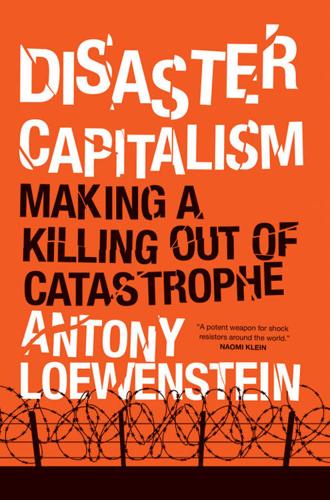
Disaster Capitalism: Making a Killing Out of Catastrophe
by
Antony Loewenstein
Published 1 Sep 2015
These three wealthy Western states dictate economic conditions of their own creation to the world, and punish the most vulnerable in their societies who dare to seek a piece of the action and those who oppose their economic regime. The United States and Britain have become global leaders in the privatized prisons and detention industries, through which millions of people have passed without any deterrent effect on criminality. Needless to say, this system has enriched favored companies such as Serco, G4S, and Corrections Corporation of America. I investigate in both countries how lobbying, ideology, and a punishment ethos have colluded to produce one of the most destructive experiments in modern times: mass incarceration. Australia has privatized all of its detention centers for asylum seekers, which are now run by multinational companies.
…
The long list of failings included serious allegations of sexual assault on the part of Central American women at a Geo-run center near San Antonio.5 Thankfully, California voters saw sense in the 2014 mid-term elections and supported Proposition 47, which reclassified nonviolent crimes as misdemeanors. As a result, tens of thousands of people would either be freed or not convicted in the first place. The number of private prisons across the nation has increased by a factor of twenty since the 1990s, and the inmate population stands at thirty-one times what it was then. Corrections Corporation of America (CCA) was established in 1983 and ran its first prison in Texas in that year. Between 1999 and 2010, there was an 80 percent surge in private facilities, including a 784 percent increase in federally administered prisons and a 40 percent increase at the state level.6 The prison industry was not only building cells and managing the facilities, but also producing equipment, paints, body armor, military helmets, and ammunition.
…
Index Abbott, Tony 279, 286 Abdul (asylum seeker) 286 Abu Ghraib prison 15 abuse 258–62 aid 123 child 102 drug 37–9 human rights 110 labor 29 outsourced 260–1 in prisons 216–17, 218 sexual 252–8, 280–1 accountability 16, 30–1, 180, 277, 291, 310 Adam, Harry 118 AECOM 53–4 Aegis Defence Services 33 Afghan Institute for Strategic Studies 44 Afghanistan 12, 19–56, 59–63, 117, 175 arrival of PMCs 20 asylum seekers from 69–70 Australian contractors 60 casualties 32, 326n27 Chinese support for 37 contractors 28–31 corruption 22, 24, 27, 42, 45, 328n48, 329–30n58 counterinsurgency 43, 52–3 departure of foreign troops 62–3 dependence on America 45 development support 62–3, 324n2, 324n3 drug economy 37–9 election, 2004 31–2 election, 2009 32 election, 2014 32 entrepreneurs 56 fear of resurgent Taliban 44–5 financial situation 62–3 future of PMCs in 23 GDP 330n61 human rights 42 inequality 56 insurgency 12, 32 intelligence gathering 51–6 intelligence-sharing nations 21 invasion of 20, 31 labor abuses 29 laws against PMCs 21 locals’ view of 48 mineral rights 24, 330n65 mining industry 24, 49–50, 330n65 Ministry of Interior 21, 40–2 Ministry of Mines 50 natural resources 49 night raids 43, 46, 52, 54, 55, 328–9n50 occupation of 22, 31–5, 36, 43, 44, 52–3, 63, 325n10 official line 40–3 past conflicts 36–7 PMC numbers 20 population surveys 330–1n66 private military companies 16, 19–25, 33–5, 41–3, 44, 46–8, 48, 50, 59–62, 331n69 propaganda 26 reconstruction 325n11 resource exploitation 49–50 security forces 27, 330n61 Soviet invasion 37 suicide attacks 41 suicide rates 332n83 Taliban rule 25 translators 55, 325n19 USAID 327–28n46 US military bases 28 violence 20 war economy 25–31, 38, 63 warlords 32–3, 44, 326n28, 326–7n30 women in 44, 47–8, 48–9, 50–1, 330n59 Afghanistan Analysts Network 54–6, 328–9n50 Afghanistan Reconstruction Group 26 Afghan police force 27 Afghan Public Protection Force 21 Africa 23 African-Americans, incarceration rates 195, 196 Agility Logistics 124 aid Afghanistan 62–3 Australia 50 contracts 123–5 corruption 126, 171 criticism of process 144–7 food 145–6 fraud 123–4 Haiti 12, 108, 120, 144–7, 340n56, 342n89 human rights abuses 123 NGO-ization of 137–41 Papua New Guinea 13, 158–9, 167, 171–5, 179 profiteering 139 waste 146 aid dependency 121, 126 AIDS 89 Alexander, Michelle 195–6 Alex, Commander 156–7 Al-Hussein, Zeid Ra’ad 277 Al Jazeera America 29 American Correctional Association (ACA) conference, 2014 202–11 American Legislative Exchange Council (ALEC) 201 American University of Afghanistan 43–4 Amnesty International 259 Anastasiou, Vassilis 102 Anti-Defamation League 93 anti-fascist activism 93–4 anti-Semitism 90–1, 93 Arab Spring 97, 127–8 Arawa, Papua New Guinea 158, 167, 180–4 Aristide, Jean-Bertrand 26, 112–13, 151 Arizona 200–2 AshBritt 108 Ashton, Paul 201 assassinations 323n33, 331n69 Assessing Progress in Haiti Act (US) 124 Asylum Help 234 asylum seekers abuse 258–62 austerity 69 Australia 269–305 children 249–50 closed hospitality centers 67–8 costs 304 demonization of 77, 288 deportations 258–63 destinations 68 detention centers 13, 64–71, 76, 77–80, 230–5, 245–51, 271 detention costs 281–3 detention network privatization 77 Greece 64–71, 75–7, 77–80, 89 indefinite detention 68 lack of sympathy for 287–8 medical care 77–80, 256–8 mental health 254–5, 285, 286, 295, 302 motivation 68, 302–3 numbers reaching Europe 96 privatized housing 230–5 processing times 300–1 public sympathy 271 racist violence 71 reception centers 67 refugee crisis 95–8 self-harm 295–6 sexual abuse 280–1 Syntagma Square protest, 2014 70 United Kingdom 230–5, 244, 245–51, 252–8, 258–63 women 253–4 Athens 67, 102–3 Metropolitan Community Clinic 80–4 AusAID 158–9, 161, 171–5, 182, 189–91, 331–2n77 austerity, opposition to 72–5 Austin American-Statesman 108 Australasian Centre for Corporate Responsibility 190 Australasian Correctional Management (ACM) 282 Australia 8, 104 and Afghanistan 50 aid 50 asylum policy development 275–85, 286, 357n4, 357n9 asylum seeker network 269–305 asylum seekers 13 Community Assistance Program 304 complicity with BCL 160 Department of Immigration and Border Protection (DIBP) 271, 274, 279, 281–2, 284,286, 289–93, 295, 297–8, 300–1, 303 detention centers 13, 271, 274, 276, 278–9, 280–5, 285–305, 356n2, 357n11 detention costs 281–3 economic reforms 322n16 exploitation of Papua New Guinea 169–75 foreign policy 173–4 goals in PNG 172 immigration policy 278 “Mining for Development” initiative 190 the Pacific Solution 276–81 and Papua New Guinea 154, 160, 163, 167, 169–75, 176–7, 179, 188–91 PMC contractors 60 privatization 361n51 and Rio Tinto 162 state-ownership approach to resources 177 tender process 289–90 turnback policy 280, 286 Australian Mercy 285 Australian Navy 276 Australian Strategic Policy Institute 190 Autonomous Bougainville Government 161, 167, 178–80, 184, 346n33 Avera eCare 205 Avon Protection 203 Bagram prison 31 Bainimarama, Frank 346–7n41 Baker, Charles 117 Baldry, Eileen 285 Balkonis, Thomas 78–80 Bamazon (TV program) 306–7 Bangladesh 341n65 bank bailouts 3 bankers bonuses 4 Ban Ki-moon 113 Bank of America 3 Barnardo’s 249–50, 266 Barrick Gold 174 Batay Ouvriye 126 Bauer, Shane 204, 207–8, 210 bearing witness 9–10 Becket House, London 263 Bedford, Yarl’s Wood detention centre 252–8, 265 Behavioral International 227 Berati, Reza, murder of 283 Berghorn, George H. 204 Berman, Steve 187 BHP Billiton 172–3, 187, 189 Bigio, Gilbert 108 Bill and Melinda Gates Foundation 114 Bishop, Julie 176, 182 black sites 16 Blackwater 16, 35, 59, 323–4n40, 331n69 Blair, Tony 60, 236 Blanchard, Olivier 99 bloggers 308 Bloom, Devin D. 307 Blue Mountain Group 30 Boeing 15–16 Bolivia 26, 125 Booz Allen Hamilton 15 border controls, privatization 241 Bougainville Copper Limited (BCL) 159, 159–61, 162, 163, 184–6, 188, 190, 343n6 Bougainville, Papua New Guinea 154–64, 167–9, 176, 178–80, 184–5 Bougainville Revolutionary Army (BRA) 154–5, 163–4, 176, 343n6 Bougainville Women in Mining 183–4 Bozorg (asylum seeker) 232–3 Brand, Russell 267–8 bribery 22, 38, 41, 329–30n58 Brown, Bob 174 Brown, Michael, killing 203 Buckles, Nick 283 Burma 14 Bush, George W. 7, 25, 43, 118, 149 Cable, Vince 236 CACI 15–16 California 5, 196–7, 208 Callick, Rowan 176 Call Sense 210 Cambodia 276 Cameron, David 50, 62, 243, 244, 252, 263 Campbell, Chad 201 Campbell, David 284, 359n30 Campsfield detention facility 246–9, 266–7 Canada 120, 304 Capita 241–2 Capital in the Twenty-First Century (Piketty) 6 capitalism 1–2 critiques 361n5 disaster 6–9 Klein’s critique of 7–8 predatory 11, 13–14, 162, 310–11 unregulated 135–6 Caracol industrial park, Haiti 116, 128–33, 133–6, 148 Carol (senior analyst) 54–6 Carr, Bob 188–9 Cash, Linda 279 Centre for Economic and Policy Research (CEPR) 124–5 Centre for Public Integrity 34 Chalmers, Camille 151–2 Chaman (Afghan refugee) 64–71 Channel 4 News 253, 267 Chaparro, Enrique Mari 137–9 cheap labor 117, 127, 132, 133, 144 Chemonics 123 Cheney, Dick 28, 30 CHF International 138–9 child abuse 102 children detention 249–50, 272 immigrants 212, 225 malnourished 82 in prisons 208 child slaves 145 China 14, 16, 24, 37, 49, 170 China Metallurgical Group Corporation (MCC) 24 cholera 113–16 Chomsky, Noam 238, 310 Christmas Island 269–75, 356n1 Christmas Island Community Reference Group 356–7n3 Christmas Island detention facility 271, 272–3, 274, 276, 278–9, 285–9, 299–305, 356n2 Chrysohoidis, Michalis 67–8 CIA 15, 59, 110, 331n69, 331n73 Citizens for a Free Kuwait 25 City AM (newspaper) 236–7 civilian casualties, Afghanistan 32 Clarke, Victoria 26 Clayton Homes 118 climate change 1–2, 8 Clinton, Bill 116, 118–19, 122, 123, 135 Clinton Foundation 118, 126, 136 Clinton, Hillary 8, 30, 118, 125, 131, 135, 171 Clive (information management consultant) 51–2 Clive (Serco contractor) 289–92 Coffey International 162 Colas, Landry 131 Cold War 33, 111 Collective Against Mining 121 colonialism 109, 160 Comcast 5 Commission on Wartime Contracting (US) 34 Community Assistance Program, Australia 304 community mapping 58 Conflict Mapping in Afghanistan since 1978 (Independent Human Rights Commission) 32 Congo, Democratic Republic of 120 contractors, Afghanistan 28–31 Conway, Jim 208–9 copper mining, ecological damage of 173 Corcoran, Thomas J. 110–11 Corinth detention centre 64, 78–80 Corizon 209 corporate ideology 14 corporate power 7 Corporate Responsibility Coalition 187–8 Corporate Watch 255, 263 CorrectHealth 199 Corrections Corporation of America (CCA) 13, 197–8, 199, 201–2, 211–22, 227, 228, 284–5 corruption Afghanistan 24, 27, 42, 45, 328n48, 329–30n58 aid 126, 171 Greece 64, 72 Haiti 141 overcharging 240–1 Papua New Guinea 170, 171, 188 price-gouging 292 counternarcotics information campaign 26 Crocker, Ryan C. 43 Crockett, Greg 204–5 Crossbar 204–5 Cuba 122 cultural sensitivity 21 Daily Mail 235 Daily Telegraph (Sydney newspaper) 172 Damana, Chris 184–5 Das, Satyajit 309 Daveona, Lawrence 177–8 David (Serco source) 292 Davis, Raymond 57, 331n73 Davis, Troy 199 Davos conference, 2015 2–3 debtocracies 99 Defence Logistics Agency 29 democracy 16, 311 Democracy Now!
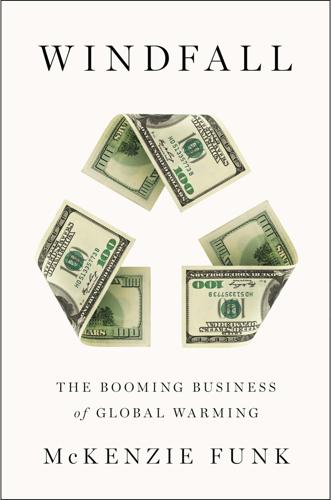
Windfall: The Booming Business of Global Warming
by
Mckenzie Funk
Published 22 Jan 2014
The contractors carried out deportations, too, escorting shackled Nigerians or Angolans or Bangladeshis on a coach-class flight home. Outside the EU, G4S ran Australia’s refugee detention system until another scandal, this one involving children sewing their lips shut during hunger strikes. In the United States, the prisoner market was dominated by the Corrections Corporation of America, whose lobbyists helped draft Arizona’s controversial 2010 immigration bill, apparently because it was good for the bottom line: The more migrants arrested under the new law, the more demand there would be for the corporation’s jails. Climate change would only grow the market, as I was reminded after I left Busuttil and drove across the border to the Netherlands, a partly below-sea-level country preparing for migrants as well as a more literal deluge from sea-level rise.
…
Aamodt, Jim, 102 abiotic stress tolerance, 246–47 Acciona, 167 acid rain, 271 activation energy, 63 Acuña, René, 129 adaptation, 10, 111–12, 210–12, 222–23, 229–32, 267 Aedes aegypti mosquito, 235–36, 237 breeding places, 238, 239 genetically modified OX513A, 236, 239–40, 242, 247, 250–53 producing sterility in, 241–44 spraying, 239–40 Aedes albopictus mosquito, 236, 244, 250 Affordable H2Ousing, 227 Africa: deportations to, 174 refugees from, 172–75, 180–84, 191 African Agricultural Technology Foundation, 245 Agcapita, 153 agriculture: increased growing days, 21, 64, 152, 153 land for, 137, 139–59 and salinity, 195, 198 and water, 87, 90, 148, 205 Agrifirma, 153 Aguas de Barcelona, 21–22 AIG (American International Group), 98, 99, 103–5, 109, 110, 113, 115 alarm fatigue, 52 Alaska: and Arctic claims, 32, 36 endangered villages in, 19, 65 and lease sale, 49, 53, 55–57, 286–87 and oil, 46, 48–49 water contracts in, 122 Alaska Gas Pipeline Project, 46 albedo, 21, 262, 266 Al-Faisal, Prince Mohamed, 122 Algodones Dunes, 126, 128 All-American Canal, 125–29, 130, 167, 264 All-Assam Students Union (AASU), 190, 191, 206 Alliance of Small Island States (AOSIS), 215–16, 226 Al Maktoum, Sheikh Mohammed bin Rashid, 227 Alphey, Luke, 241–44, 250–53 Alps, melting glaciers in, 65–66, 79–83, 86 American Enterprise Institute (AEI), 267, 276, 279 American Society of Civil Engineers (ASCE), 232 American Society of Tropical Medicine and Hygiene, 243 Andermatt, Switzerland, 80 Anderson, Terry, 132–33 Angus and Ross, 73 Anopheles gambiae mosquito, 247 Anthropocene epoch, 5, 252 Aquaterra, 222 aqueducts, 125 Aqueous, 124 aquifers, 205 Arad, Elisha, 89–91 Arcadis, 229, 230–31, 233–34 Arctic: development plans for, 45–46, 47 melting sea ice in, 21, 32, 35, 45, 47, 48, 56, 64–66, 77–78, 118, 194, 203, 284, 287–88 national claims on, 32, 35–37, 38 new shipping lanes in, 16–18, 25–26, 31–32, 54, 284 and petroleum, 16, 31, 32–33, 47, 286 Arctic Climate Impact Assessment, 46 Arctic Council, 194 Arctic Frontiers conference, 45–47 Arctic Ocean, and Law of the Sea, 36 Argentina, land deals in, 153 ARIS (Automatic Rice Imaging System), 248–49 Aristotle, 66 Arrhenius, Svante, 5 Ashkelon, Israel, 88–91 Assam, 189–92, 205–6 Assam Movement, 206 Athabasca tar sands, 21, 52, 58, 263–64 Atkin, Carl, 152, 154 Atmocean, 273 Aurora Flight Sciences, 269 Australia: drought in, 88, 92, 101, 119, 132, 133, 135, 144, 152, 203, 221, 261 Number 1 Rabbit-Proof Fence, 177 water markets in, 132, 133–37 Austria, melting glaciers in, 79–81 Ayles Ice Shelf, 19–20 Baffin Bay, 63 Bahama Islands, 64, 220 Ballou, Rip, 245 Bangladesh, 189–213 border fence, 190–92, 206–9, 212–13 borders of, 191 crops grown in, 195 cyclones in, 196 and flooding, 64, 192, 196–97, 199, 203, 233, 280 foreign aid to, 212 and India, 167, 190–92, 197, 204–9, 210, 212 population growth in, 204, 209 poverty of, 191 refugees from, 191, 204, 206–12 and war games, 203–4 water salinity in, 195, 198 Bangladesh Rice Research Institute (BRRI), 198–99 Bar, Etan, 92–93, 119 Barbon, Nicholas, 112–14 Barents Sea, 37, 53 BASF, 246–47, 249–50 Bashir, Omar, 147, 149 Bay of Bengal, 191, 195, 196 Beatrix, queen of Netherlands, 229 Beaufort Sea, 36, 48, 49 Beckett, Margaret, 20 Ben-Gurion, David, 84, 87 Bentham, Jeremy, 50–51, 52, 58–59 Bidwells, 152 Bikini Atoll, 216 biofuels, 52, 59 biotechnology, 249–50 Blaauw, Robert Jan, 45, 47–49 Black, George, 210 Black Angel fjord, 73, 74, 77–78 Black Earth Farming, 153 BlackRock, 153 Blue Sky Water Partners, 134 Boeing, 269 Borlaug, Norman, 249 BP, 43, 104, 230 BRAC, 210 Brahmaputra River, 189–90, 193, 195, 196, 199 Brazil: and land deals, 140, 144, 153 and mosquitoes, 243 Brock, Stan, 103 Buffett, Warren, 263 Buiter, Willem, 118, 121 Buoyant Foundation Project, 231 Buriganga River, 197–98 Burma, border of, 191 Bush, George W., 29, 55 Busuttil, Simon, 171–74 Byers, Michael, 24, 25, 26–27, 128 Cain, James P., 71 Caldeira, Ken, 265, 266, 268, 272, 273, 275 Cal Fire, 102 California: drought in, 100 fires in, 97–107 insurance in, 108–9 water for, 125, 127–28, 130 Cambodia, and land deals, 144 Cameroon, and land deals, 144 Campbell-Purdie, Wendy, 163, 177 Canada: and Arctic claims, 32 and Arctic traffic control, 25 First Nations tribes, 153 increased growing days in, 21, 152, 153 Inuit in, 67–68 and Kyoto Protocol, 21 and Law of the Sea, 36 and natural gas, 22 and Northwest Passage, 15–19, 25–27, 32 sovereignty of, 15–19, 27, 67 tar sands in, 21, 52, 58, 263–64 and U.S. cooperation, 26 water in, 24–25 Canary Islands, 164, 165, 168, 172 Cancún Climate Change Conference (2010), 10 Cantwell, Maria, 255–59 cap-and-trade system, 44, 45, 59 Cape York Peninsula, 136 carbon dioxide emissions: and CCS, 49–51, 53, 58, 59 cutting, 7, 10, 217 and lawsuits, 110 levels of, 5, 32, 52, 92, 199, 210 and melting sea ice, 45 and plant growth, 21 sources of, 52, 191, 204–5 trading scheme, 151–52, 212 Carteret Islands, 64, 65 Cassar, Joseph, 181 Cato Institute, 133 Causeway Water Fund, 134 Cayman Islands, 243–44 CCS (carbon capture and storage), 49–51, 53, 58, 59 Center for a New American Security, 203–4 Center for Naval Analysis, 30 Centra Technology, 204 CH2M Hill, 123 Chacaltaya glacier, 80 Chaffey, George, 125 Chernobyl, 260 Cherrapunji, 213 Chevron, 63, 65 Chilingarov, Artur, 35, 36, 37 China: cloud seeding in, 87–88, 260 energy demands of, 47, 50 floods in, 119 Great Wall of, 176–77 and Greenland, 72 and land deals, 144 megadams in, 195 and Northwest Passage, 31 rivers diverted in, 87 water shortages in, 144, 152 Chowdhury, Atiqul Islam (Atique), 197–202, 205, 209 Chubb insurance, 103 Chukchi Sea, 36, 48, 285–87 Lease Sale 193: 49, 55–57, 286–87 Church, John, 194 CIA, 72, 268 Citigroup, 118, 121 Climatic Consequences: Investment Implications of a Changing Climate, 21 Citizens Property Insurance Corporation, 238 Clean Air Act, 271 Climate Change Vulnerability Index, 205, 222 Climate Corporation, 109 climate lawsuits, 65, 110, 218, 263 climate refugee law, 219 climate remediation, 266–69 cloud seeding: and hurricane modification, 110, 260 and rainmaking, 87–88, 92, 259–61 and rain prevention, 260 and snowmaking, 261 and solar radiation management, 266 Club of Rome, Limits to Growth, 3 coal, sources of, 32, 46, 52 COAST, 197, 210 Colbert Report, The, 203 Coles, Terry, 108 Colorado River, 86, 117–18, 121, 125–26, 131 Colorado River Compact (1922), 125 Columbia Law School, island nations conference, 215–21 ConocoPhillips, 45, 46, 57, 65 continental shelf, 32, 36 Copenhagen Climate Change Conference (2009), 10, 68, 110, 217, 226, 266, 274 Corrections Corporation of America, 174 Credit Suisse, 118, 120 CropDesign, 249–50 Cyclone Aila, 196, 201 Cyclone Sidr, 196, 200, 201–3 Cypress Mountain, Canada, 85 Daffern, Tim, 74–75 Davidge, Ric, 124 Dead Sea, 90 Deepwater Horizon, 55 Delta Works, 221 dengue fever, 217, 235–43, 244, 250 Dengue Vaccine Initiative, 245 Denmark: and Arctic claims, 32 and Greenland, 36, 61, 67–68, 70–71, 73 and Law of the Sea, 36 desalination, 58, 83, 84, 85, 88–91, 122, 167, 221 desertification, 131, 146, 162–63, 167, 233 Deutsche Bank, 5 “The Investment Climate Is Changing” event, 1–3 investment funds of, 2, 3, 88, 153, 245 Devon Island, 17, 23, 27–29, 33–35, 39–40 Dickerson, John, 118, 119–21, 129–33 DiGiovanna, Chief Sam, 97–107, 110–11, 114, 115–16 Dircke, Piet, 229, 231, 232, 233 directional drilling, 48 Disney, Walt, 259 Doyle, Michael, 238–41 drought, 118, 144, 203 and cloud seeding, 261 and desalination, 88, 221 and desertification, 131, 167 engineering solutions for, 86, 92–93 and fires, 100, 101–2 and food crisis, 133 and food prices, 152 and sale of water rights, 131–36 and volcanoes, 279–80 Dubai, coastline of, 227 Dubner, Stephen, 275 Duncan, Sara, 247 Duoyuan Global Water, 3 Dutch Docklands, 225–28 DynCorp International, 102 Ecofin fund, 134 Egede, Hans, 67 Egypt: famine in, 280 farmland in, 147–48 Ellesmere Island, 19, 32, 36 Emergent Asset Management, 153–54 Emma Maersk, 233 Endangered Species Act, 46 energy independence, 52 energy sources, 47–48, 50–52, 58 Enewetak Atoll, 220 Enlightenment, 86 Enoksen, Hans, 71 Eqecat, 108 Ethiopia: Blue Nile in, 148 food aid to, 148 and land deals, 140, 144, 148 European Border Surveillance System, 167 Exercise Frozen Beaver, 17 extinction, 208, 252 ExxonMobil, 45, 63, 65, 104, 267 Exxon Valdez, 123, 278 F&C Global Climate Opportunities Fund, 4, 108 Farakka Barrage, India, 195 Farmers Insurance, 103, 104–6, 115 Feinstein, Dianne, 127 FEMA, 238 fire, 99–102 Great Fire of London, 112, 114 and insurance, 98, 102–10, 114 Firebreak Spray Systems, 102–4, 105, 109, 275 firefighting, public vs. for-profit, 97-107, 111–12, 114–15 FireIce gel, 103 Fireman’s Fund, 103 Fireprotec, 103 fishing: in Greenland, 63–64, 68 in Senegal, 165–66 and small island states, 218–19 Fleming, James, Fixing the Sky, 260 Floating Proverb, 227 FloodBreak, 233 food crisis, 133, 140, 144, 146, 201, 210 food prices, 52, 58, 144, 152, 161, 201 forests: deforestation, 58 and parasitic larvae, 101 and wildfire, 101–2 fossil fuels, 47, 52 fracking, 131–32 Francis, Pope, 172 Franco, Francisco, 167 Franklin, Benjamin, 266, 280 Friends of the Earth, 66, 240 Friis, Janus, 109 Frontex, 167, 171, 173–74 Fulton, Mark, 2–3 Fund for Innovative Climate and Energy Research (FICER), 268, 269 futurism, 43, 58–59 G4S, 174 Gabriel, Peter, 43 Gadet, Peter, 150–51, 157, 159 Gadhafi, Moammar, 171, 173, 183 Galahad Gold, 153 gambusia (fish), 238 Ganges (Padma) River, 195, 196, 199 Gates, Bill, 244–45, 256, 263, 268, 269, 275 Gates Foundation, 244–45, 247, 256, 257 GelTech fire retardant, 103 genetic modification (GM): abiotic stress tolerance, 246–47 crops, 3, 199, 210, 243, 246–50, 252 mosquitoes, 236–45, 247, 250–53 opponents of, 246 patents on, 246 production facilities, 248–53 reengineering humans, 252 RIDL, 242–44 suicide genes, 236 genomics, 247 geoengineering, 30, 258–59, 262–81 Gerrard, Michael, 215, 217 Gershonowitz, Yitzhak, 92, 93 GEUS, 69–71, 73, 74 Ghoramara Island, 19 Gingrich, Newt, 267 glacier melt, 65–66, 79–83, 86, 87, 205 GlaxoSmithKline (GSK), 245 Gobi Desert, 176–77 Golden Valley Fire Suppression, 103 Goldman Sachs, 118, 145, 234 Goodell, Jeff, How to Cool the Planet, 268 Gore, Al, 2, 146 An Inconvenient Truth, 5, 21, 118, 119 Grayback Forestry (GFP Enterprises), 102 Great Green Wall, 162–64, 167–71, 175–79, 184–86 Greece, 101, 173 Greenberg, Maurice “Hank,” 113, 143 greenhouse gases: accounting for, 20, 44 and CCS, 49–51, 53, 58, 59 Kyoto Protocol on, 21, 44 threat of, 32, 45, 47, 51 Greenland, 61–78 and climate change profitability, 62, 74, 76 and Denmark, 36, 61, 67–68, 70–71, 73 fish in, 63–64, 68 land rising in, 66, 77–78 melting ice cap of, 64–66, 77, 194, 284 Niaqornat meeting, 75–77 petroleum and minerals in, 63, 72–75, 76, 154 and self-governance, 62–64, 66–67, 68, 71–72, 77, 78, 122, 154, 216 Thule Air Base in, 72 Greenlandic language, 63 Greenland Minerals and Energy, 73 Greenland Sustainable Mineral and Petroleum Development Conference, 72–73 Greenpeace, 57 Green Revolution, 249 Greenstar, 228 Gurdjieff, Georges, 41 Hadley cell, 131, 194 Hall, Nick, 73 Hammerfest, Norway, 53–55 Hammond, Aleqa, 71 Hansen, James, 5 Hans Island, 17, 22, 24, 34, 36, 217 Hanson, Ann Meekitjuk, 23 Harman, Willis, 43 Harper, Stephen, 17, 21, 58 Heffernan, Bill, 136–37 Heilberg, Phil, 139–51, 152, 154–59 Himalayas, glacier melt in, 86 Holland America Line, 229, 230 Hollis, Leo, 112 Homestead Acts, 129–30 Hoover Institution, 258 Hoque, Enamul, 189–91, 200, 205–9, 212 Horner, Jack, 270 Horsfall, Sophie, 4 Howard, John, 136 Hudson Institute, 42 Hudson Resources, 73 Human Rights Watch, 149, 192 hurricanes: Hurricane Andrew, 108 Hurricane Ivan, 239 Hurricane Katrina, 108, 222, 238 Hurricane King, 260 Hurricane Sandy, 215, 219, 232, 233–34, 284, 287 and insurance, 4, 98, 108, 110, 238 and ocean temperatures, 196 research into, 110 suppression of, 260, 273–75 and windborne debris, 231 hydrogen energy, 58 hydropower, 64, 86 hyperbolic discounting, 7 IBM, 230 ice albedo feedback effect, 21 Iceberg Transport International Ltd., 122 Iceland: volcanic eruptions in, 280 water from, 122 IDE (Israel Desalination Enterprises), 82–85, 88–89 All Weather Snowmaker, 81–82, 85 creation of, 84 IID (Imperial Irrigation District), 126 India: and Bangladesh, 167, 190–92, 197, 204–9, 210, 212 Border Security Force (BSF), 192–93, 207–9 carbon emissions of, 191, 204–5 drought in, 280 energy demands of, 47, 50 and land deals, 144, 162 and melting glaciers, 66, 205 and refugees, 191, 204, 206–10 Indian Ocean, rising waters of, 194 Indonesia, and land deals, 144 Inherent Land Quality Assessment, 152 insurance: and climate change, 4, 98, 99, 107–10 FEMA/flood, 238 and fire, 98, 102–10, 114 and hurricanes, 4, 98, 108, 110, 238 policies dropped, 108, 238 rate hikes, 108 reinsurance, 108–10 windstorm, 238 Intellectual Ventures (IV), 256–57, 260, 261–65, 266, 268, 270–74, 278–79, 280 Intergovernmental Panel on Climate Change (IPCC), 2, 20, 66, 194, 266, 267, 276 International Food Policy Research Institute, 146 International Organization for Migration (IOM), 210, 219 Inuit: Canadian and U.S. treatment of, 67–68 and climate change, 23–24 lawsuit of, 110 and Northwest Passage, 17, 23, 33–34 Inupiat Eskimos, 55, 56, 285 investment opportunities, 2–4, 21–22, 88, 118–21, 151–54, 263–64, 269 island nations, disappearing, 64–65, 215–21, 226 islands, artificial, 217, 225–28 Israel: cloud seeding in, 92 desalination in, 84, 88–91, 221 and IDE, 82, 84, 88–89 and immigrants, 167 water technology in, 91–93 Italy: borders of, 66, 85 immigrants to, 173–74 Jacob, Klaus, 219 Jarch Capital, 143, 148–49, 150 JASONs, 268–69 Jesuit Refugee Service (JRS), 180 John Deere, 22 Jordan River, 87, 90 Joseph, Doctor, 156–57 Kahn, Herman, 42 Karimov, Islam, 143 Kazakhstan, and land deals, 144, 152 Kennedy, Don, 65 Kenya: drought in, 149 and land deals, 144 Keynes, John Maynard, 6 Key West, 236–38, 240–41, 243, 250 Khosla, Vinod, 109 Kiewit Corporation, 264 Kiir, Salva, 140–41, 154 Kiribati (Gilbert Islands), 64, 65, 220, 226 Kissinger, Henry A., 25 Kitzbühel, Austria, 80 Kleist, Mininnguaq (Minik), 62–64, 66–69, 71, 75–78, 194, 216 Knights of Malta, 179 Koch brothers, 104, 133 Koonin, Steve, 268–69 Korea, and land deals, 144 Kulluk, 48, 216, 286–87 Kuwait, and land deals, 144 Kyl, Jon, 127 Kyoto Protocol (1997), 21, 44, 50, 53, 54, 212, 267 Lake Havasu, 117 Landkom, 153 Langmuir, Irving, 259 Latham, John, 266, 269, 275 Law of the Sea treaty, 31–32 Article 76 submissions under, 36–37 and island states, 217, 218, 220 Levitt, Steven, 275 Liao, S.
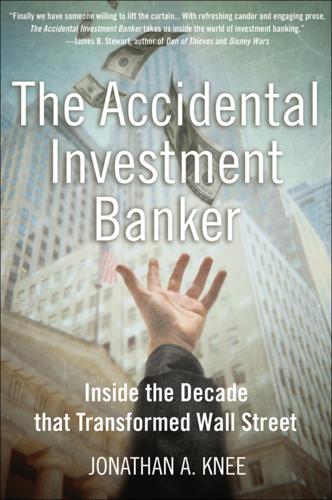
The Accidental Investment Banker: Inside the Decade That Transformed Wall Street
by
Jonathan A. Knee
Published 31 Jul 2006
I was handed the unsurprising fruits of this preliminary effort: a list of 21 unrelated misfit names who either would never do any banking business period or would, because of some historic grudge or conflict of interest, simply never do banking business with Morgan Stanley. I gazed down at this client list from hell, which included such favorites as Price Chopper, a small private chain of discount supermarkets based in upstate New York, and Corrections Corporation of America, a Nashville-based manager of prisons. Finally, I had that catalyst I had been looking for. “This is just a first cut,” I was told reassuringly. “When you get back from the holidays in January, you can meet with the group heads individually and see what makes sense.” We were now entering the third year of a downturn.
…
See also specific individuals celebrity CEOs, 150 compensation, 222 and current environment, 223, 228–29 importance of, 209 relationships with, 213, 228 role of, 29 Chance, David, 38 Chandra, Sabash, 53 character in investment banking, 170 Chase Manhattan, 90, 92 Chernow, Ron, 79, 111–12, 226–28, 230 Chicago Directory Company, 160 Chicago Gang, 201 chickens, 6–9 Chisholm, Sam, 33, 39–40 Ciba-Geigy, 115 Cisco, 145 CitiCable, 53 Citigroup, 20, 23, 92, 169, 197 Clark, Jonathan, 193 Clinton, Bill, 195, 196–97 CNBC, xii Cognizant, 160 Columbia Business School, 187, 208 commercial banks, 92, 110–11, 177 commissions, 21 commitments committee, 52–53, 147, 165, 166, 167 compensation after bust, 183, 206, 222 and culture of banking industry, 126 at Goldman Sachs, 56–58, 84, 95 and Internet boom, 154–56, 172 at Morgan Stanley, 116, 119–20, 122, 134, 172, 173, 208–9 relative compensation, 88 competition, 68, 112, 199–200, 219 competitive intelligence, 28–30, 228 Competitive Local Exchange Carriers (CLECs), 175 confidentiality requirements, 95–96 conflict-of-interest issues, 20, 91, 157–58 consolidations of banks, 89–91 convictions of Wall Street figures, 137 Corporate Executive Board (CEB), 28 Corrections Corporation of America, 215 Corzine, Jon, 48, 98, 101–5 Coster, F. D., 44 coverage officer position, 89 Cowles family, 69 Cowles Media Company, 75 Crawford, Steve, 168 credit, revenue, 120, 132 Credit Suisse, 22, 92 Credit Suisse First Boston (CSFB) and Donaldson, Lufkin and Jenrette (DLJ), 89–90, 92, 174, 190 and employee retention, 224 M&A activities, 24 merger, 22 and principal equity funds, 20 Quattrone’s move to, 149 Cruz, Zoe, 167 culture of investment banking, 126–27, 196–97.
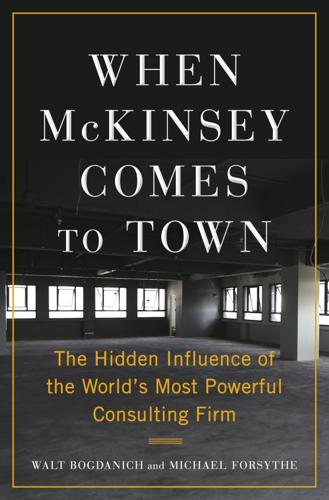
When McKinsey Comes to Town: The Hidden Influence of the World's Most Powerful Consulting Firm
by
Walt Bogdanich
and
Michael Forsythe
Published 3 Oct 2022
The firm was helping ICE carry out Trump’s immigration policy. Full stop. * * * — McKinsey had success at ICE doing what it does best—cutting costs. Its consultants claimed ICE could save $385 million a year, mostly from renegotiating contracts for private companies such as CoreCivic (formerly Corrections Corporation of America) that operated many of the more than two hundred detention centers ICE used across the country. The consultants found six areas where it could trim expenses, and they assigned a number and a letter to each of them. Area 1a was staffing; 1b was “medical.” Other items included supplies, capital expenditures, and taxes.
…
Health System Reform, 64 Centers for Medicare and Medicaid Services (CMS), 70–71 Central Intelligence Agency (CIA), 3 Cerberus Project, 118–19 Chambers, Susan, 44 Channel 4 News (Britain), 251, 261 Chase Manhattan Bank, 171, 174, 176–80 Chaskalson, Matthew, 229, 241–42 Chavez, Cesar, 82 Chen Fenjian, 91–92 Chengdu McKinsey Management Consulting, 99 Chen Guang, 103, 108 Chernobyl (TV miniseries), 2 Cheung, Louis, 97 Chevron, 163–64 Chewning, Eric, 93 Chicago Cubs, 216 Chicago office, 55, 150, 231 Chicago White Sox, 205, 215 Chief Strategist Roundtable Dinner, 267 children and teenagers ICE family separation and, 75, 83 immunization and, 45 Missouri Medicaid and, 60 opioids and, 132, 142 vaping and, 123–29 Childress, Trey, 55 China, 45–46, 91–109, 152, 165–66, 189, 196, 233, 257, 279 China Communications Construction Company, 91–93, 100–102 China Construction Bank, 108 China Economic Weekly, 99 China Merchants Group, 103, 108 China Mobile, 99 China National Offshore Oil Corporation (CNOOC), 166 China National Petroleum Corporation (CNPC), 166 China Smart City Expo (2019), 104 China Telecom, 99, 108 Chinese Commerce Ministry, 99 Chinese Communist Party, 92, 94, 96, 98, 100–101, 103, 105, 107–8 Chinese National Development and Reform Commission, 99 Chinese Navy, 92n, 93 Chinese State–Owned Assets Supervision and Administration Commission (SASAC), 107–8 Chopra, Manish, 28–29 Chrysler, 32 Chui, Michael, 127, 150 Churchill, Winston, 258 cigarettes, 73, 110–18 Cirque du Soleil, 267 Cisco, 40 Citibank, 171, 174–77, 180 Citizen Lab, 253 Claims Core Process Redesign System, 194, 199 Clee, Gilbert, 23 Cleveland Indians, 216–18 Clevinger, Mike, 217 Climate Accountability Institute, 163 “Climate Breaking Points” panel, 150 climate change, 17, 20, 150–60, 163, 166–68 Clinton, Bill, 94, 96, 100, 244, 265 CNBC, 8, 255–57 CNN, 84 coal, 28, 99, 156–62, 164–68, 224, 226 “Coal Processing Optimization” report, 165 Cole, Bob, 133 collective bargaining, 34 Colossus system, 194, 202–3 Columbia (Disneyland riverboat) accident, 12 Communications Workers of America (CWA), 48–49 compensation consultants, 33–35, 42 Congressional Budget Office, 63 Conservative Party (Britain), 262–75 Consumer Federation of America, 198, 203 Continental Illinois Bank, 175, 177–80, 186, 207 CoreCivic (formerly Corrections Corporation of America), 80–81 Cornell University, 21 corruption, 25–26, 30, 225–41, 250. See also specific agencies; and countries Corruption Watch, 240–41 cost-of-living adjustments, 32 Cotopaxi, 149 Cotton, Tom, 18 Countrywide Financial, 182, 187 Courtney, Marcus, 41 COVID-19 pandemic, 71–73, 163–65, 274–75 Cox, Bryan D., 83 Cozzi, Dr.

The Line Becomes a River: Dispatches From the Border
by
Francisco Cantú
Published 1 Jan 2018
One other time, the woman answered, on a Sunday. It was busy, she said, shaking her head. I think weekdays are the way to go. I looked back at the boys. José Junior sat holding his face in his hands. To pass the time I began to walk around the room, gazing at the posters on the wall from the Corrections Corporation of America. “Zero Tolerance Suicide Prevention,” said one, “Be a hero, keep it at zero.” “Opportunity is knocking,” said another, “CCA is currently accepting applications.” Another poster depicted a smiling black man: “I believe everybody needs a little fun in their life. I am Terry Williams Jr., a Senior Corrections Officer in Tennessee.

Undoing Border Imperialism
by
Harsha Walia
Published 12 Nov 2013
According to Detention Watch Network, five prison corporations that hold contracts with the US Immigration and Customs Enforcement have poured twenty million dollars into lobbying efforts.(55) Arizona’s controversial SB 1070, which legalizes racial profiling based on “suspicion of being an illegal immigrant,” was drafted during a meeting between state legislators and the Corrections Corporation of America, the largest private prison corporation in the United States.(56) This is part of what Naomi Klein calls “a privatized security state, both at home and abroad,” as she outlines how the War on Terror has maximized profitability for security markets.(57) In this lucrative market of migrant detention and border securitization, the value of Israeli exports in security technologies has almost quadrupled.(58) A notable example is the contract for the border fence between the United States and Mexico going to a consortium of companies including Elbit.

A Map of Future Ruins: On Borders and Belonging
by
Lauren Markham
Published 13 Feb 2024
By then, the United States had been incarcerating immigrants for nearly a century, but the Reagan administration launched the first detention quota, ensuring that at any given moment a minimum of 10,000 immigrants would be locked up. But where would they be housed? This political landscape was fertile ground for immigration profiteering. In 1983, the Corrections Corporation of America (now CoreCivic) became the world’s first major private prison company, reaping profit from public dollars to detain people in both the immigration and the criminal justice systems. The more people were locked up, and the longer they were locked up for, the more money such a company stood to make.
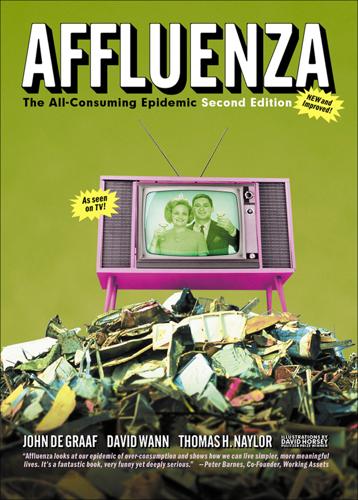
Affluenza: The All-Consuming Epidemic
by
John de Graaf
,
David Wann
,
Thomas H Naylor
and
David Horsey
Published 1 Jan 2001
Another reason is that the United States has already locked more than two million of its people behind prison bars, the largest percentage of any nation in the world, and ten times the rate of most industrial countries. California alone has more inmates than France, Germany, Great Britain, Holland, Japan, and Singapore combined. In some dying Rust Belt industrial cities, like Youngstown, Ohio, prisons have become the biggest source of jobs. Private companies like the Corrections Corporation of America make millions running lockup facilities. Smart Wall Street brokers play “dungeons for dollars,” investing heavily in the new privatized prison industry.17 GLOBAL INFECTION The social scars left by affluenza are being replicated throughout the entire world, as more and more cultures copy the American lifestyle.
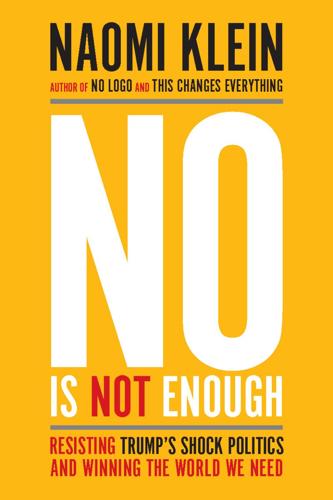
No Is Not Enough: Resisting Trump’s Shock Politics and Winning the World We Need
by
Naomi Klein
Published 12 Jun 2017
Waiting in the wings, biding their time, are plenty of other members of the Trump team who have deep skills in profiting from all of that. Profiting from Prisons Between election day and the end of Trump’s first month in office, the stocks of the two largest private prison companies in the USA, CoreCivic (formerly the Corrections Corporation of America) and the GEO Group, doubled, soaring by 140 percent and 98 percent, respectively. And why not? Just as Exxon learned to profit from climate change, these companies are part of the sprawling industry of private prisons, private security, and private surveillance that sees wars and migration—both very often linked to climate stresses—as exciting and expanding market opportunities.
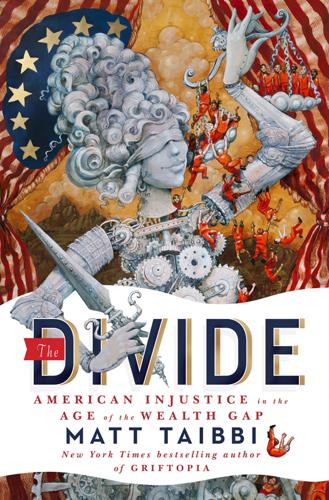
The Divide: American Injustice in the Age of the Wealth Gap
by
Matt Taibbi
Published 8 Apr 2014
The blankets also stank. And the hole, there was no air in there. “But I was lucky. I was out of there in four hours, transferred to the immigration detention center.” Alvaro’s trip wasn’t a long one. He moved to the North Georgia Detention Center, run by a private company called CCA, the Corrections Corporation of America. The CCA facility in Gainesville is basically a retooled version of an old city jail. In fact, it shares a building with the Gainesville Police Department. The facility, surrounded by giant coils of razor wire, is inopportunely located in a new enterprise-zone area of Gainesville, darkening the mood for the would-be yuppie-friendly coffee shop and poetry/arts center across the street.
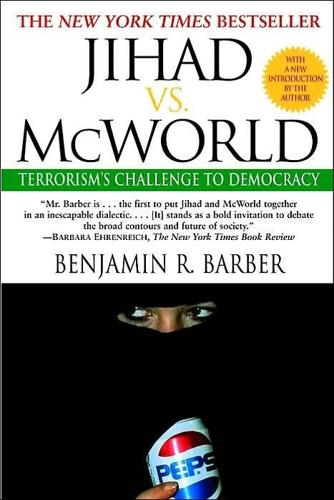
Jihad vs. McWorld: Terrorism's Challenge to Democracy
by
Benjamin Barber
Published 20 Apr 2010
Through the voucher movement, Americans have become familiar with the privatization of education. Fewer know that nearly 2 percent of our prison population has been turned over to private companies in the thirteen states that have surrendered their sovereign power of punishment to private vendors like the Corrections Corporation of America; or that there are currently more private security guards in America than public police. See Anthony Ramirez, “Privatizing America’s Prisons,” The New York Times, August 14, 1994, p. K 1. 11. Milton and Rose Friedman, Free to Choose (New York: Harcourt Brace Jovanovich, 1980). 12.

The Controlled Demolition of the American Empire
by
Jeff Berwick
and
Charlie Robinson
Published 14 Apr 2020
A traditional public prison is trying to clear inmates out of their facility as soon as they can, but a private prison is trying to invent new ways to keep them locked up. The reason for this is very simple: they are paid by the State for each inmate they keep incarcerated. • From 1990 – 2009 the number of inmates in for-profit prisons increased 1,664%.105 • The private prison industry is estimated to be worth $70 billion.106 • Correction Corporation of America housed 90,000 inmates in their 62 facilities. • In 2011, CCA generated revenues of $1.7 billion. • 41 of the 62 private prison contracts have minimum occupancy clauses (80%-100%). • Arizona, Louisiana, Virginia, and Oklahoma have occupancy quotas of 95%-100%. • Three Arizona private prisons have occupancy quotas of 100%.107 • For-profit prisons hold 19% of the federal, and 7% of the state prison population.108 • More than 50% of all immigrants detained are held in private prisons.109 • Detained immigrants account for $5.1 billion in revenue for the industry.110 Their business is locking people up, and business is booming.
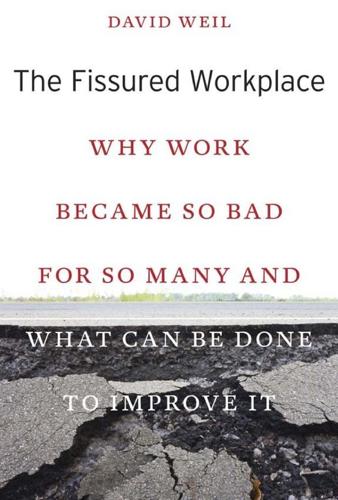
The Fissured Workplace
by
David Weil
Published 17 Feb 2014
Major REITs in the hotel industry, each with values of about $1 billion, include Host Hotels, LaSalle Hotel Properties, RLJ Lodging Trust, and Strategic Hotels and Resorts. See Liu (2010). Fueled by the significant tax savings for REITs under federal law, their use has expanded dramatically in recent years and goes far beyond hotel/motel companies. Companies operating privately run prison and detention centers (Corrections Corporation of America), data and document storage operations (Iron Mountain), and casinos (Penn National Gaming) have been approved by the Internal Revenue Service for REIT status. See Nathaniel Popper, “Restyled as Real Estate Trusts, Varied Businesses Avoid Taxes,” New York Times, April 22, 2013, A1, B5. 9.

A Generation of Sociopaths: How the Baby Boomers Betrayed America
by
Bruce Cannon Gibney
Published 7 Mar 2017
.* Depending on assumptions and tastes, different states could be chosen, but the point is simply that there’s something off about a society that spends so much to achieve so little. Naturally, the neoliberal machine has offered its services (private prisons) to siphon off public funds to be transferred to their shareholders and Boomer executives. The largest of these private prisons are Corrections Corporation of America and GEO—the first founded by Boomers and the second by a Boomer-age immigrant raised in America and well immersed in Boomer culture. These completed the neoliberal custodial trinity: charter schools, for-profit universities, and now their barbed-wire equivalents, privatized prisons.